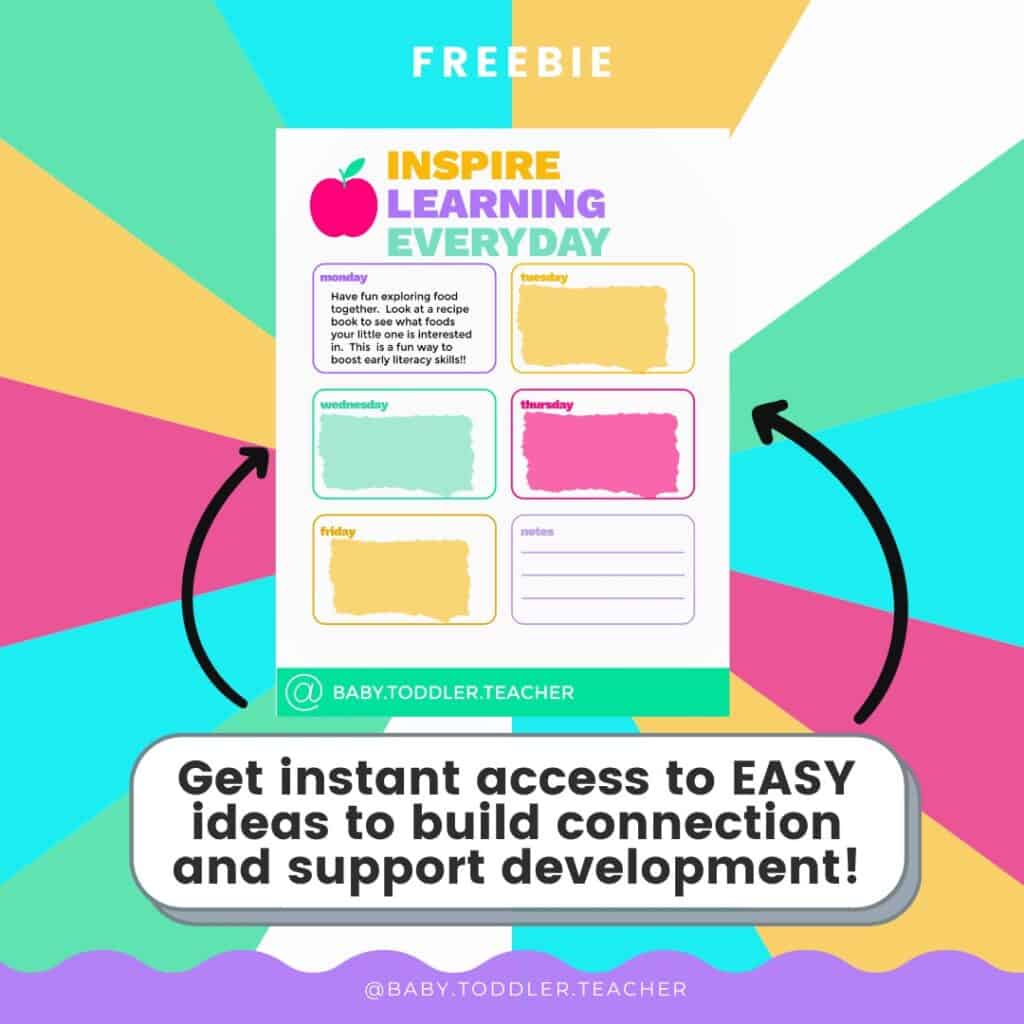Developing language skills in toddlers is an exciting and fundamental phase of their early years.
The joyful anticipation of hearing your child utter their first words is a milestone every parent awaits eagerly.
However, the journey to this milestone doesn’t have to be stressful or high-pressure.
By integrating language learning into everyday activities, you can guide your toddler toward language acquisition in a relaxed, low-pressure manner.
This blog post will provide practical, easy-to-implement strategies that will help your toddler talk, turning everyday occurrences into opportunities for learning and growth.
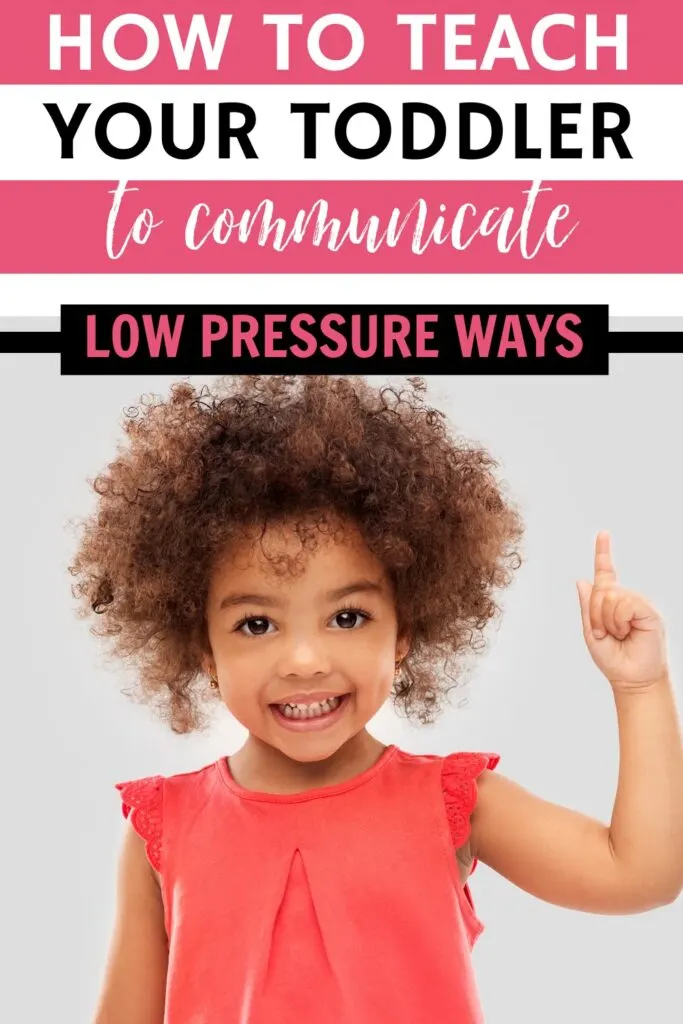
(This post may contain affiliate links. To read our full disclosure policy click here.)
Concerns about Language development
If you have concerns regarding your child’s language development, it’s vital to seek early intervention.
Language delays can manifest in various ways, such as a toddler not achieving speech milestones by the expected age or struggling with pronunciation more than their peers.
A critical first step in addressing potential language delays is scheduling a hearing test.
Hearing issues can sometimes be at the root of language and speech delays.
In such instances, consulting a licensed speech-language pathologist can make a significant difference in your child’s progress.
You can access them through your state’s early intervention program.
These professionals are skilled in identifying and treating language disorders, including expressive language delay, where a child struggles to express themselves using words and sentences.
Speech therapy is a particularly effective intervention method.
Through engaging, tailored activities and exercises, a speech-language pathologist can guide your child and coach you in how to support their language skills.
Remember, early intervention is key.
It allows for a timely address of any issues, potentially preventing further complications, and setting your child up for success in their language development journey.

What language milestones is your child working on?
In the early stages of language development, your toddler will be mastering single words.
This will be the foundation of your child’s speech, allowing them to identify and express basic needs, objects, and emotions.
Following this, they will begin to construct short phrases.
These phrases, though not always grammatically correct, will demonstrate an increasing ability to string words together to convey more complex ideas.
As your toddler progresses, they will start to form three-word sentences, providing a clearer picture of their thoughts and desires.
This phase is an exciting step forward in their communication journey, signifying a significant leap in language comprehension and expression.
Simultaneously, your child will be developing the ability to follow simple commands.
This milestone not only reflects an understanding of language but also an aptitude for responding and acting upon it.
It’s crucial to remember that each child will reach these milestones at their own pace.
There’s no set timeline for correct pronunciation or the use of complex sentences.
Some toddlers may articulate full sentences with ease, while others may communicate more effectively through a combination of single words and gestures.
Any progress, no matter how small, is a step forward in your toddler’s unique language development journey.
Encourage Your Toddler’s Communication Skills During Your Daily Routine
Utilizing daily routines to encourage communication skills can be incredibly effective as they offer numerous opportunities for repetitive practice.
Repetition is a fundamental principle of learning, and daily routines inherently provide a consistent and familiar context for this.
For instance, meal times, bath times, or play times are recurring activities that your toddler experiences every day.
These situations are ripe with opportunities for language learning.
You can name the actions you’re doing (“Stirring the soup”), objects you’re using (“That’s the blue towel”), or ask simple questions (“Do you want the ball?”).
As these phrases are repeated day after day, your toddler will absorb the language, reinforcing their understanding and expression capabilities.
Over time, they start to associate words and sentences with actions, objects, and experiences, fostering both their receptive and expressive language skills.
The natural, low-pressure environment of daily routines also allows toddlers to learn at their own pace, reducing the risk of frustration or language-related anxiety.
You can get more ideas on how to encourage language development all day HERE.
Remember, the goal is to integrate language learning seamlessly into the day, transforming ordinary activities into fun, educational experiences.
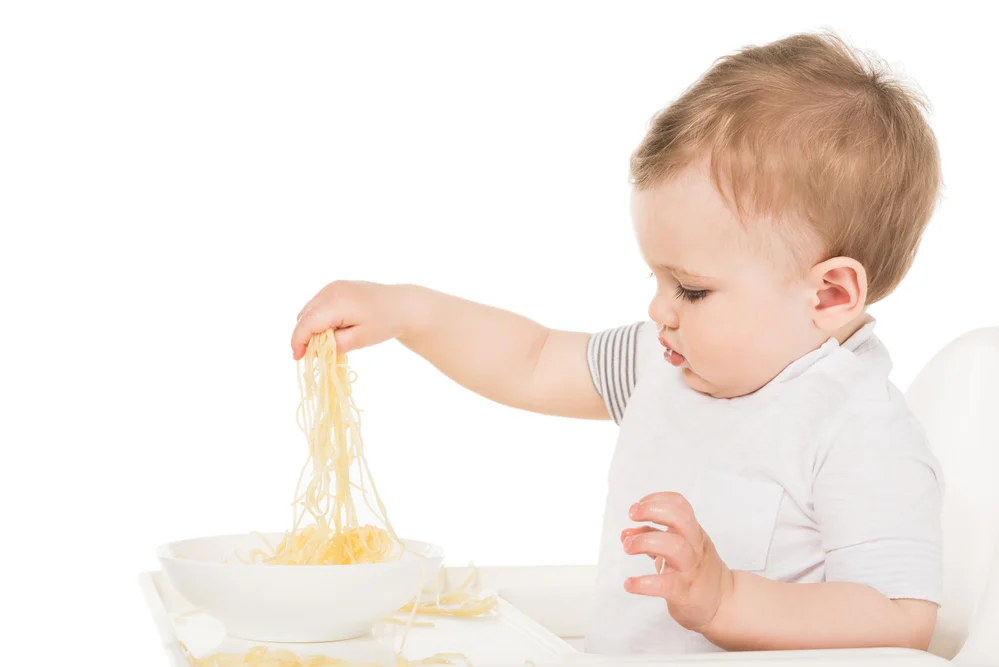
Utilizing Mealtime Opportunities to Foster Communication
Adopting a low-pressure strategy during mealtimes can greatly aid your toddler’s language development, by offering your child choices.
This method involves presenting your toddler with two food options, such as an apple and a banana.
Hold the items up and clearly label them, saying, “apple,” and “banana.”
Then, provide them with wait time to make a choice.
Your child may choose by looking, pointing, or even vocalizing their preference.
This method not only helps in learning new words but also enhances decision-making skills.
Once they make a choice, reinforce it by labeling the item again, repeating phrases like, “You chose the apple,” or “You want the banana.”
By consistently employing this strategy, your toddler will start associating words with the corresponding items, enhancing their understanding and expressive language skills.
Remember, the aim is to maintain a relaxed atmosphere and make language learning a fun, stress-free activity, seamlessly integrated into your child’s daily routine.
Incorporating Baby Sign Language into Mealtime Routines
Baby sign language is another highly effective tool for fostering early communication, especially during mealtimes.
This non-verbal communication method allows toddlers to make simple requests before they might be able to articulate them verbally.
Start by teaching your child simple signs, such as “more”, “all done”, or signs for their favorite foods and drinks.
For instance, if your child enjoys apples, teach them the sign for “apple” and use it each time you offer this fruit during meals.
The repetition and associated action will help your child link the sign with the object, reinforcing their language learning.
Similarly, introducing signs for “more” and “all done” can empower your toddler to express their needs during mealtimes, promoting a sense of autonomy and self-confidence.
If your toddler is throwing food when they are all done eating…”all done” can be a powerful sign to help prevent some of that!
Remember, the goal of using sign language is not to replace verbal communication but to supplement it and provide your child with an additional avenue to express themselves.

Enhancing Language Skills During Bath Time
Bath time presents a fantastic opportunity for language development, particularly in teaching your child about different body parts.
As your toddler splashes in the water or while you’re toweling them off, you can talk about and label each body part. For instance, say, “You’re splashing with your hands,” or “Let’s dry off your feet.”
This not only entertains your child but also introduces them to new vocabulary in a fun and engaging manner.
Over time, as these words are repeated in context, your toddler starts associating the names with the respective body parts, enriching their expressive language skills.
Remember, the objective is to create a stress-free, enjoyable learning environment that seamlessly integrates into your child’s routine, making language development a delightful part of their daily activities.
Singing Songs or Nursery Rhymes During Diaper Changes
Diaper change time can be transformed into an enjoyable learning experience for your toddler by incorporating songs and nursery rhymes.
This not only makes the process more fun but also stimulates your child’s language development.
By associating words with actions, your child will begin to understand the meaning behind the lyrics.
For instance, singing the popular nursery rhyme “Head, Shoulders, Knees, and Toes” while pointing to each body part can help your child learn the names of these body parts.
Similarly, songs or rhymes that involve actions such as clapping, waving, or bouncing can help your child understand the relationship between language and movement.
Repeating these songs over time strengthens your child’s language comprehension and enhances their vocabulary.
So, turn that diaper change into a fun sing-along session, and watch as your child’s language skills blossom.
Playtime Provides Lots of Opportunities to Grow Your Toddler’s Vocabulary
Playtime is undoubtedly one of the best things for a toddler’s language development, offering a universe of opportunities for enhancing vocabulary.
Interactive play, in particular, encourages toddlers to make lots of sounds, mimicking adults, and eventually forming words and phrases.
For instance, while your child engages with their favorite toy, you can narrate what they are doing, introduce new words related to the toy, and ask questions to stimulate their thinking.
This not only helps expand their vocabulary but also promotes a fun way of learning that aligns with your child’s interests.
Independent play is another excellent avenue for language development.
As your toddler explores toys and playthings on their own, they start creating their own verbal expressions.
Encourage this by echoing their expressions, adding words, and forming two-word phrases.
For instance, if your toddler points and says, “ball”, you could respond with “red ball”.
This interactive approach not only enriches their vocabulary but also instills confidence in expressing themselves.
Toddler’s play is a great way for your child to discover new words, explore different concepts, and enhance their language skills in a natural and enjoyable way.
Reading Books is a Great Way to Introduce New Words
Reading books, particularly picture books, to young children is arguably one of the best things you can do to introduce new words into your child’s vocabulary.
The visual stimuli of picture books coupled with the sound of your voice create a compelling and engaging learning environment.
Encountering new words on a daily basis, children start associating the illustrations with the words, fostering a greater understanding of language.
The love of reading you instill in these early years will likely stick with them for a lifetime.
Reading books with short sentences and simple instructions can help toddlers grasp the fundamental structure of language, while the comforting sound of your voice reading aloud can associate this learning process with a sense of safety and affection.
Thus, incorporating reading into your child’s daily routine is a powerful tool for enhancing their vocabulary and language skills in a fun, enjoyable manner.
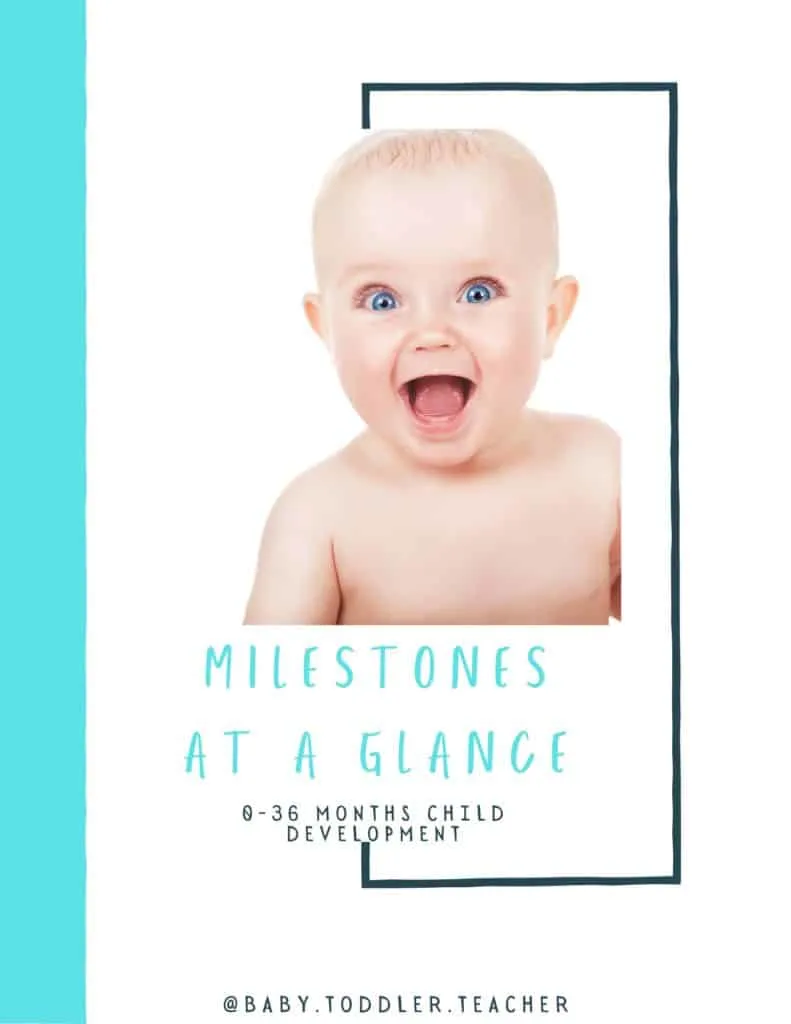
Grab your FREE Milestone Guide HERE.
Hope You Enjoy These Ideas!
In conclusion, the toddler years present a critical window for language development. Embracing the strategies discussed in this blog post can boost your child’s ‘toddler talk’ and overall communication skills.
From leveraging sign language to singing songs during diaper changes, making the most of bath time, orchestrating interactive play sessions, and introducing the world of books early on, each of these activities offers a unique and effective approach to language learning.
Be aware of speech delay, but remember that every child develops at their own pace, and simple words will gradually form into sentences.
The best thing parents can do is to provide a stimulating environment, full of fun activities that promote language development.
Seize everyday opportunities, like a trip to the grocery store, as an extra time for learning, making it fun and engaging.
The journey of fostering language development in the toddler years is a rewarding one, and your investment in these years will lay a strong foundation for your child’s future communication skills.
Frequently Asked Questions
There are several ways to stimulate your toddler to talk, such as incorporating sign language, singing songs or nursery rhymes during diaper changes, and reading books together. You can also engage in interactive play activities that promote language development, narrate daily routines and experiences, and provide a safe and supportive environment for your child to express themselves. Remember to keep learning fun and enjoyable!
It is normal for toddlers to understand more words than they can express. If your child understands and responds appropriately but is not yet speaking in full sentences, continue to provide a language-rich environment and encourage their attempts at communication. Consider consulting with a pediatrician or early intervention if you have concerns about your child’s development. Ultimately, every child develops at their own pace.
If you are working with your state’s early intervention program, they most likely will offer services in your home so that you and your child can stay in your natural environment.
Related Posts You Will Enjoy
The Complete Guide to the Best Toddler Climbers
How to Entertain Your Busy Toddler at Home
Top Toddler Books about Feelings
Toddler Throwing Food? Try This!
How to Deal with Toddler Tantrums in Public
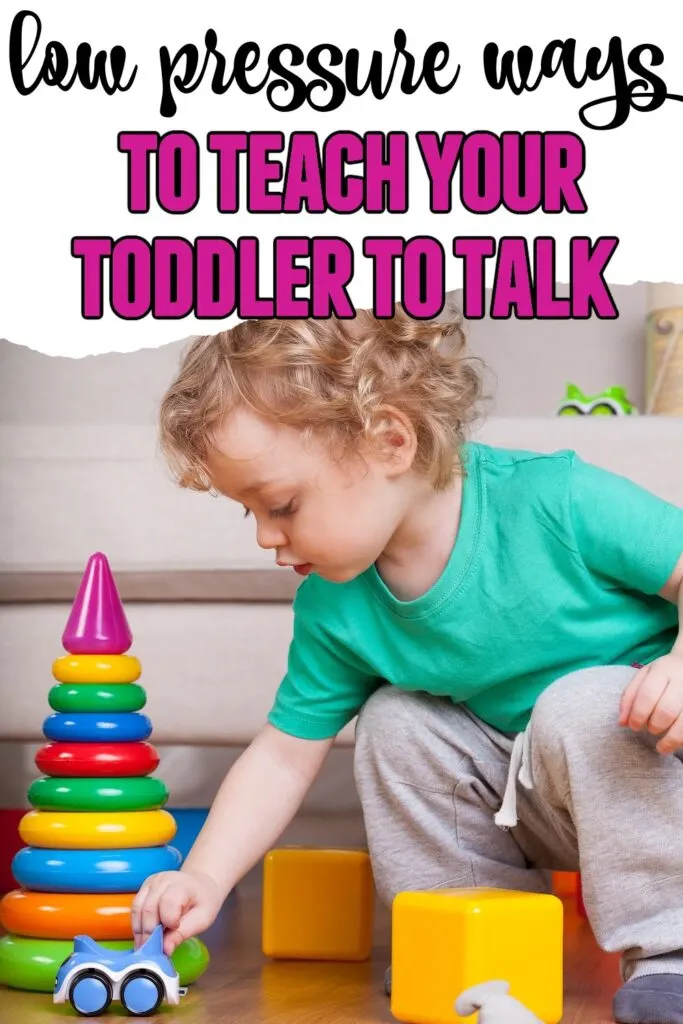

Kayla O’Neill has a master’s degree in education as well as a bachelor’s degree in special education with an emphasis in early childhood education. She has been working as a developmental therapist with babies and toddlers in early intervention since 2012. She is also a mom with two young children.
